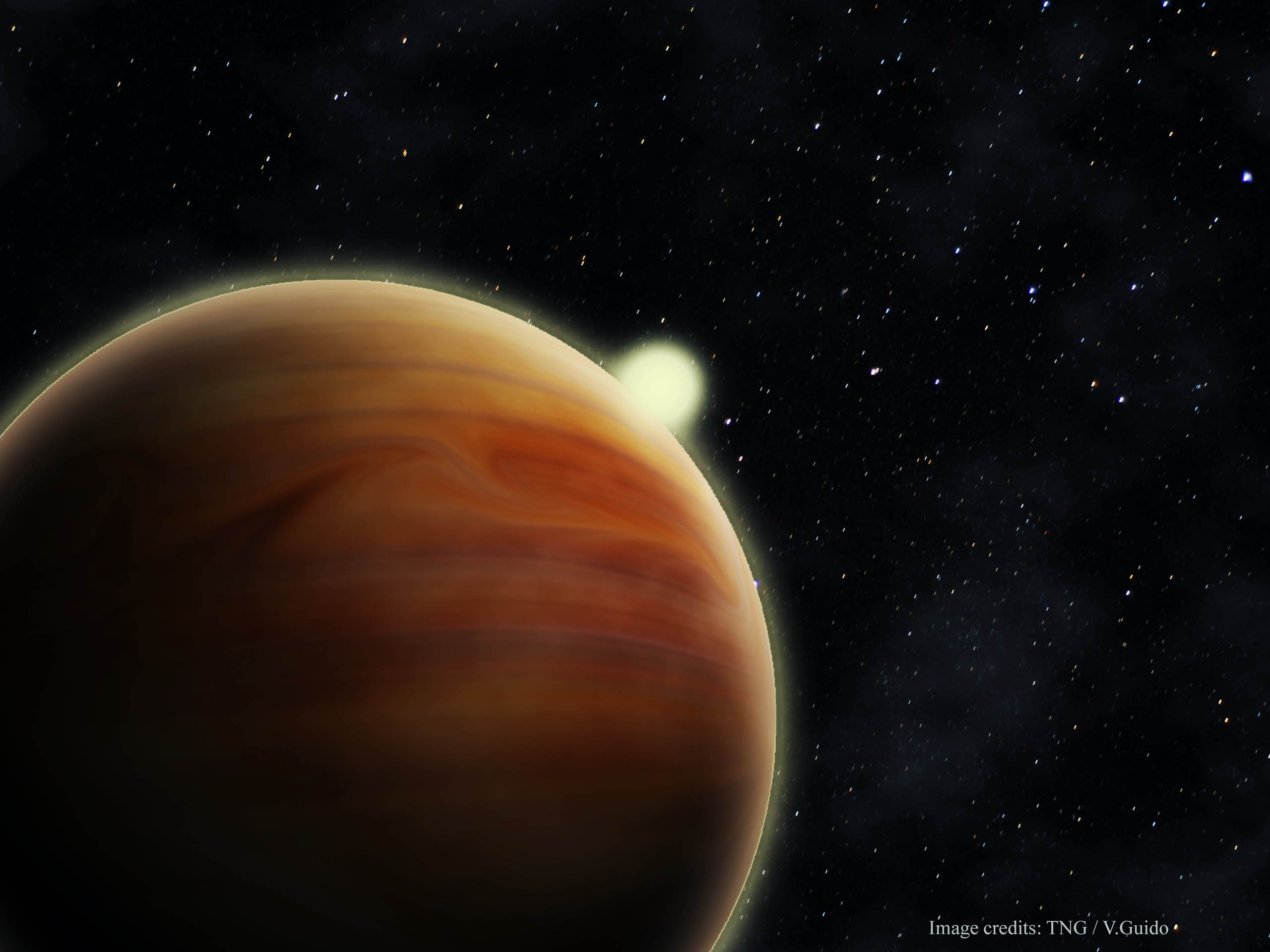TrES-4b a very light weight exo-planet

A group of astronomers led by Alessandro Sozzetti from the INAF-Observatory of Torino revisited the TrES-4 system parameters, using high-precision HARPS-N radial velocity (RV) measurements together with photometric light curves.
The planetary system resulted to be composed of a planet TrES-4b, a highly bloated transiting hot Jupiter (with a radius of 1.7 Rjup ), and a star which is much more luminous than our Sun, emitting three to four times more energy per second than it. The star with about the same age of our Sun is starting to cross the Subgiant Branch in the HR diagram. The planetary system is located about 1,400 light years away from Earth and zips around its parent star in 3.5 days.
To obtain these results, the team used: 1. RV measurements of TrES-4 obtained with the spectrograph HARPS-N at the Telescopio Nazionale Galileo (TNG) within the context of the Global Architecture of Planetary Systems (GAPS) program, taken during 17 individual epochs between March 2013 and July 2014; 2. light-curves of the transit obtained with the Zeiss 1.23-m telescope at the German-Spanish Calar Alto Observatory (CAHA).
A combined analysis of the two sets of measurements allowed to derive a much lower mass for TrES-4b than previous results, making it the second-lowest density transiting hot Jupiter known to-date.
The much smaller mass of TrES-4b implies a significantly lower density than previous estimates for this planet. The new location of TrES-4b in the mass-radius diagram of known transiting giant planets makes it the second-lowest density object, WASP-17b being the record-holder at present. With a mass closer to the mass of Saturn, and a size about 1.7 times of Jupiter, TrES-4b belongs to a small subclass of planets that have extremely low densities.
For more information:
link at the paper http://arxiv.org/pdf/1501.06403.pdf
Gloria Andreuzzi, INAF-TNG, dydat@tng.iac.es

